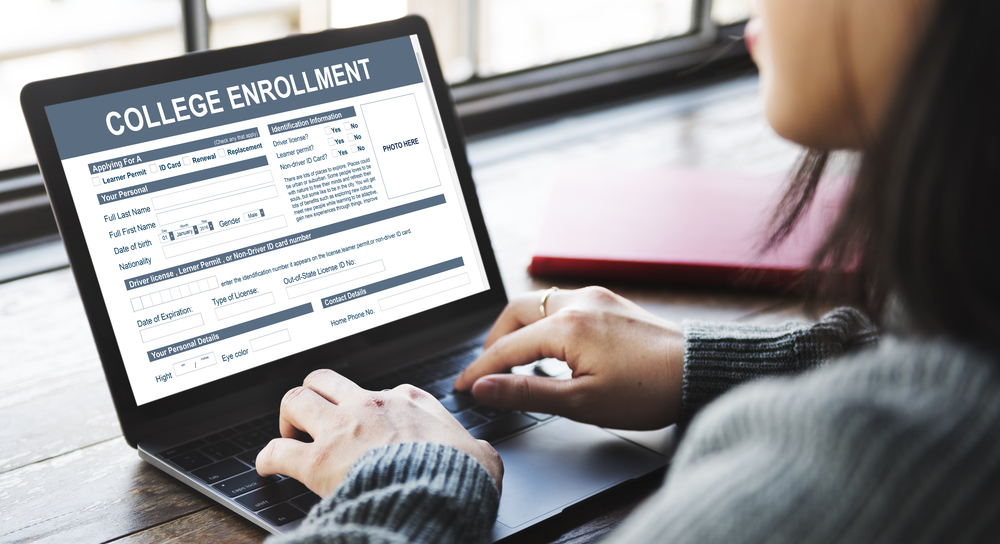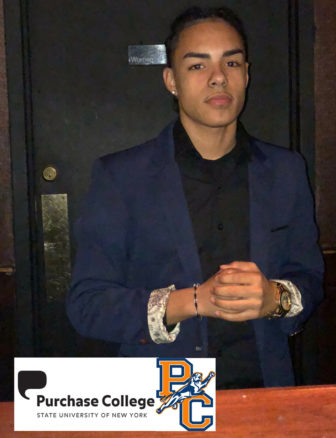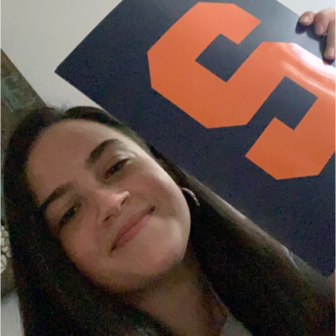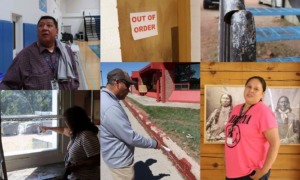
Rawpixel.com/Shutterstock
.
Frejoel Munoz couldn’t stop smiling as he read the email.
“It was such a great moment to know that I got into the college that I wanted,” said Munoz, a senior at Bronx Engineering and Technology Academy, who will be heading to Purchase College in the fall to study acting.

Frejoel Munoz
And for Kaylee Nieves, a senior at Urban Assembly Maker Academy, who is headed to Syracuse University, the decision was just as easy.
“They accepted me and I said this is it. This is where I’m going,” said Nieves, who plans to study public health.
In making their decisions, they considered things like financial aid and program offerings, but both students also connected with the feel of their campus. They pictured themselves walking on verdant lawns, surrounded by a sea of peers. They did not picture Zoom rooms and Google Meets.
May 1 was National College Decision Day — the deadline for most high school seniors to choose a college. But in the midst of a pandemic the day has passed with less fanfare this year.
While some colleges and universities have extended the deadline to June 1, students still face increasing financial strain and the challenges of remote learning. Everyone is struggling with the uncertainty of the fall semester.
“Students are excited about getting into college. I just think the framing of that is a little scary,” said Chymeka Olfonse, executive director of BUILD NYC, a college and career readiness program. “If you hear it’s all going to be virtual, what does that look like?”
Will they or won’t they?
A national study of high school seniors found that 8% of students who had already chosen a four-year college decided not to enroll because of COVID-19. While that number may seem small, the survey was administered in late March, before some states had issued shelter-in-place orders. Since then, unemployment claims have ballooned across the nation and researchers predict that college enrollment will continue to decline as a result.

Kaylee Nieves
Not surprisingly, students who have waited longer to make this decision are waffling even more. Among the students who had not yet decided on a college, 34% said COVID was influencing their decision.
So college counselors are stepping up their game to support students in making confident decisions in an uncertain time.
“The goal is still the same. It’s just going to look totally different,” said Ivy Anderson, director of postsecondary readiness at Urban Assembly Maker Academy.
For students still weighing their options, Anderson recommends using the same criteria they normally would to gauge college fit — size, location, demographics, cost, program offerings, graduation rates — but also considering how the school has responded to the COVID crisis.
“Are they pressuring students? Are they giving students the space to still decide and ask questions?” said Anderson. While some students are opting to defer their freshman year, she said there is conversation in the admissions world about how mass deferrals would take spots away from the next class of students.
“Students should never feel shy about asking questions,” said Rose Cherubin, a college counselor at BUILD NYC. “College is a time to absorb as much information as one can.” Cherubin recommends that students use extended deadlines to research and advocate for spots in opportunity programs such as HEOP, EOP and SEEK that offer additional financial and academic support to students who need it.
And both counselors agree that one of the smartest moves students can make right now is to file a financial aid appeal letter. Most families’ financial circumstances have changed since students applied in the fall and they may qualify for more assistance.
“Be persistent,” Anderson said. Admissions and financial aid offices are backlogged with work right now, but with a looming economic recession, financial aid will be a critical decision factor for most students.
Communication crucial
But making the decision is just the first step.
In a typical year, 28% of students who are admitted to CUNY schools do not enroll in the fall.
 But this is not a typical year. Experts predict that the “summer melt” trend, which usually ranges from 10%-40% nationally and disproportionately impacts low-income students, will be even greater because of the coronavirus.
But this is not a typical year. Experts predict that the “summer melt” trend, which usually ranges from 10%-40% nationally and disproportionately impacts low-income students, will be even greater because of the coronavirus.
While the cause of summer melt is complex, one factor that helps to reverse the trend is communication and engagement with incoming freshmen.
“When you equip and empower students with information, it eases the anxiety,” said Kenya George, BUILD NYC’s program director.
And with so many uncertainties surrounding the fall semester, students need more communication than usual.
But 40% of high school seniors who have decided on a college for the fall said they are not receiving enough information from the school about how COVID-19 will impact enrollment.
In the transition to remote learning, admissions offices have also had to figure out how to provide virtual services for students.
CUNY launched their Future Student Enrollment Guide, which centralizes resources for all 25 schools for the first time and addresses COVID-related FAQs.
“We’re doing everything we can to provide the reassurances that students are making the right choices,” said Bob de Luna, assistant vice president for communications at Hunter College.
Like many schools, Hunter is providing virtual campus tours, webinars on student life and Skype-based counseling sessions.
For Nieves, connecting with current freshmen at Syracuse helped ease some of her anxiety about what remote learning would be like. And she even found someone to be her roommate — when the time comes.
Anderson recognizes the value of connecting incoming freshmen to their college community early. She started an Instagram account to acknowledge her seniors’ college acceptances and connect them to current students, faculty and staff.
“It’s been a cool way to celebrate kids and make them feel connected,” Anderson said.
BUILD NYC staff are helping their seniors develop a plan of action and identify at least one person they can reach out to for support.
“Even if we don’t know what school will look like,” Olfonse said, “at least there’s a mechanism for them to be successful.”
What happens in autumn
But the biggest source of uncertainty for students is whether campuses will be open in the fall.
And the truth is, schools don’t know either.
While health experts are still working to contain the virus and develop testing kits and a vaccine, New York City Schools Chancellor Richard Carranza said there is only a 50-50 chance the city’s public schools will be open in September.
“I don’t think our crystal ball is any different than theirs,” de Luna said.
So the best that schools — and students — can do is prepare for both options and hope for the best.
“We are hoping and going under the assumption that everything will be normal,” said David Querusio, assistant director of admissions at New York University. “Regardless, we’re going to be offering classes and helping students. Offering that same NYU experience.”
But is it the same?
Six weeks of remote instruction has gotten mixed reviews from students.
“It’s not the same when you’re doing homework by yourself at home, instead of being with the teacher in class, asking for help anytime you need it,” Munoz said.
Access to technology has proven to be a huge barrier to effective remote learning. And for many students, the transition to college is already an academic and cultural leap.
“About 80% of my students are first-generation college students,” Anderson said. “They’ll be the first in their family to go to school. And now on top of that, they’ll be the first cohort of students possibly ever in the U.S. to uniformly start their semester online.”
Not being physically on campus could make it harder for first-generation students to access the resources they need.
Anderson also worries about the social adjustment.
The digital classroom is “a relatively anonymous space,” Anderson said. How will students connect with others and develop their college identity?
The class of 2020 is already mourning the loss of major social milestones like prom and graduation.
“I’m not able to have actual graduation or finish off my high school year good with my friends,” Munoz said. “Everything just changed. It’s like a colorful world to a dark world.”
Losing out on the freshman year experience would be another big blow.
But if there is a silver lining, perhaps the extra time at home would serve as a bridge to college life.
“Students are primed and ready to transition into online classes,” Cherubin said. She thinks the time students have already spent in remote learning has shown them their triggers, their limits and how they learn best.
Munoz said the remote learning experience has taught him how to manage his time and stay on top of his work, which is one of the biggest learning curves for incoming college freshmen who are away from home for the first time.
Nieves remains hopeful that she will be on campus come fall. But despite all the uncertainty swirling around her first year of college, there is one thing about which she is certain:
“I’m ready for this.”
This story has been updated.





























